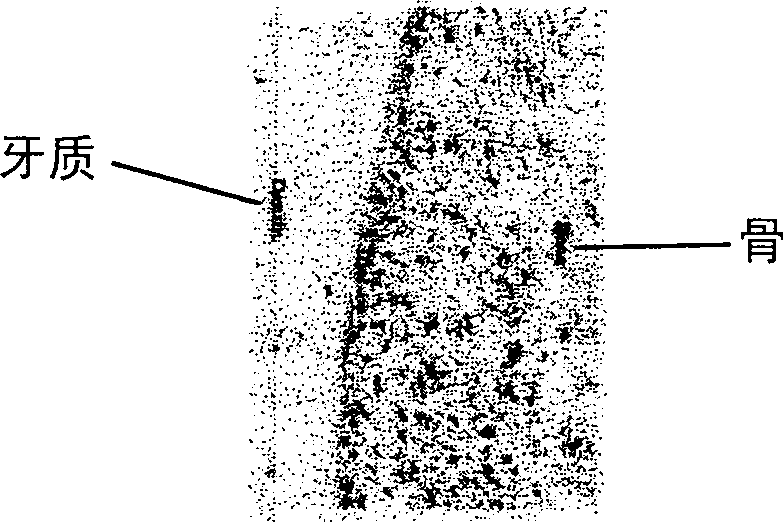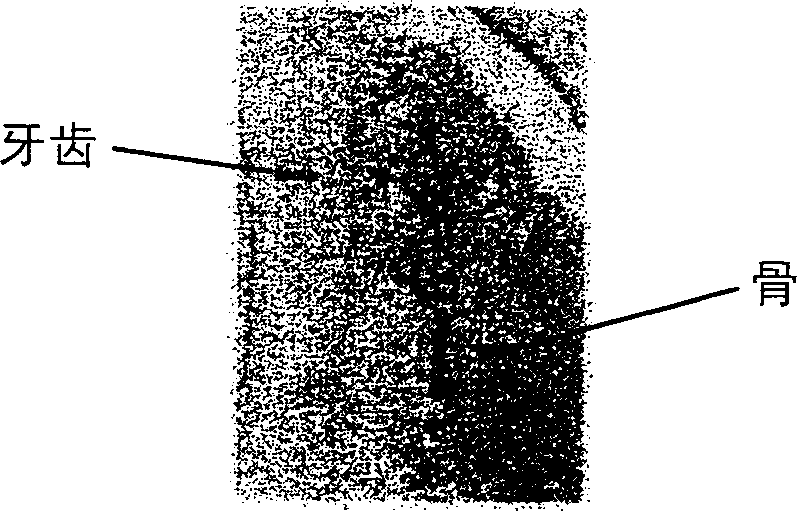Method of judging the onset of periodontitis
A technique for periodontitis and periarthritis, which is applied in the fields of disease diagnosis, biochemical equipment and methods, and microbial determination/examination. Difficulty distinguishing, etc.
- Summary
- Abstract
- Description
- Claims
- Application Information
AI Technical Summary
Problems solved by technology
Method used
Image
Examples
Embodiment 1
[0037] In Example 1, the gingival crevicular exudate was collected to measure the enzyme activity of γ-GTP to distinguish gingivitis from periodontitis, and the above experiment was carried out according to the following steps. However, the present invention is not limited to the examples.
[0038] First, gingival crevicular exudates were collected from three subjects (patients cured of periodontitis, patients with gingivitis, and patients with periodontitis). The gingival sulcus exudate was collected by inserting a paper point into the gingival sulcus of each subject for 1 minute, and then detecting the gingival sulcus exudate infiltrated into the paper point. Among them, in patients with previously cured periodontitis, the gingival sulcus exudates were collected from two places: a periodontal pocket with a shallow gingival sulcus and a deep periodontal pocket located elsewhere. In addition, in patients with periodontitis, from the part of the gingival sulcus where the curre...
Embodiment 2
[0048] Example 2 is an experiment for confirming the expression of γ-GTP mRNA by preparing gingival crevicular exudates from patients with periodontal disease using the genetic detection method.
[0049] First, RNA was extracted from gingival crevicular exudates of patients with periodontal disease using a kit for RNA extraction / ISOGEN (manufactured by NIPPON GENE Co., Ltd.). Then, target DNA was synthesized and amplified by RT-PCR using an RT-PCR high-Plus-kit (manufactured by TOYOBO). As primers for RT-PCR, 5'-TCCCTTGACCTTCAGGAGAACGAG-3' and 5'-GTGTGGTGCTGTTGTAGATGGTGA-3' were used. As a result, the target NDA was amplified by the PCR method using these primers, and it was thus confirmed that human γ-GTP mRNA was expressed in the gingival crevicular exudate.
[0050] From the above results, it was shown that γ-GTP in the gingival crevicular exudate can be detected even by the genetic detection method.
Embodiment 3
[0052] Example 3 is an experiment showing that γ-GTP participates in the destruction of alveolar bone using experimental periodontal disease model rats, and the steps are as follows.
[0053] Seven-week-old Wistar rats were immobilized under anesthesia, and LPS was brought into contact with the occluded left and right molars of the rats for 1 hour. In addition, after 0, 1, 2, 3, and 7 days, they were euthanized to collect periodontal tissues, fixed in formalin by conventional methods, and made pathological sections. Among them, "LPS" refers to lipopolysaccharide (lipopolysaccharide), which is an important component of the outer membrane of Gram-negative bacteria. As an endotoxin, LPS has various biological activities. In this experiment, LPS was used to sensitize the molars of rats for a certain period of time to experimentally cause periodontitis. As LPS, LPS derived from Escherichia coli was used.
[0054] Next, the pathological sections were first stained with γ-GTP ( fi...
PUM
 Login to View More
Login to View More Abstract
Description
Claims
Application Information
 Login to View More
Login to View More - R&D
- Intellectual Property
- Life Sciences
- Materials
- Tech Scout
- Unparalleled Data Quality
- Higher Quality Content
- 60% Fewer Hallucinations
Browse by: Latest US Patents, China's latest patents, Technical Efficacy Thesaurus, Application Domain, Technology Topic, Popular Technical Reports.
© 2025 PatSnap. All rights reserved.Legal|Privacy policy|Modern Slavery Act Transparency Statement|Sitemap|About US| Contact US: help@patsnap.com



